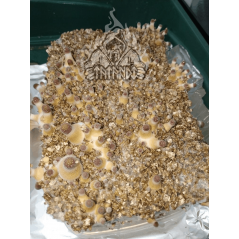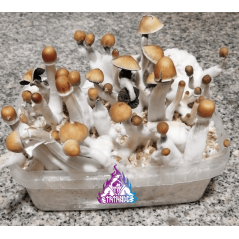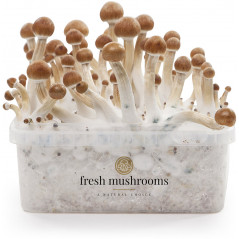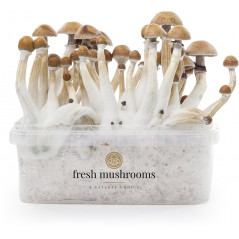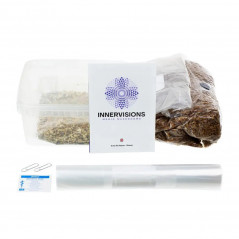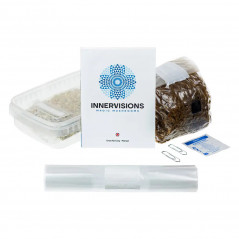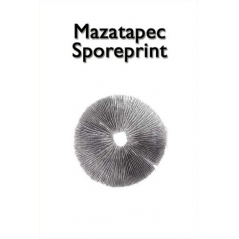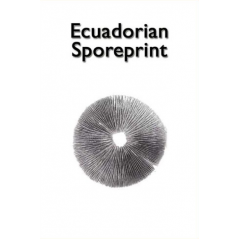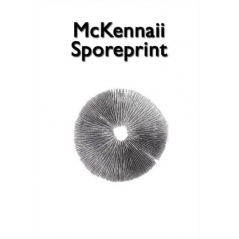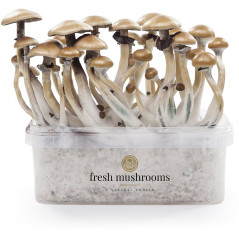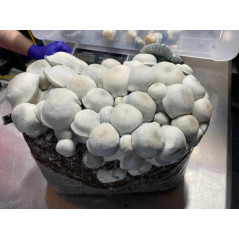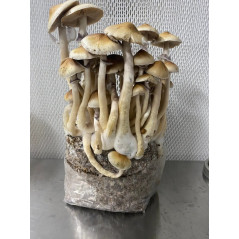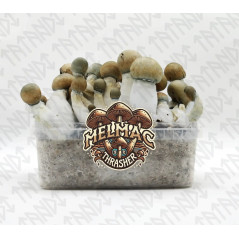
Magic mushrooms
Hallucinogenic mushrooms, also known as psychedelic mushrooms or magic mushrooms, are species of mushrooms that contain psychoactive compounds, mainly psilocybin and psilocin. These substances affect perception, mood and cognitive processes, generating unique sensory experiences, deep introspection and, in many cases, a sense of connection with the environment.
For centuries, various indigenous cultures have used these mushrooms in spiritual rituals and shamanic ceremonies due to their ability to induce altered states of consciousness. Today, their use has spread to recreational and therapeutic settings, with studies exploring their potential to treat disorders such as depression, anxiety or post-traumatic stress.
Main genera of hallucinogenic mushrooms:
- Psilocybe: This genus encompasses numerous species of hallucinogenic mushrooms, such as Golden Teacher or Mazatapec, recognized for containing psilocybin and psilocin. They are distributed globally, with a preference for humid areas rich in organic matter. Some of the most prominent psychoactive species are:
- Psilocybe cubensis
- Psilocybe semilanceata
- Psilocybe mexicana
- Psilocybe cyanescens
- Psilocybe azurescens
- Panaeolus: Small-sized species of very high psychoactive intensity, such as Copelandia Hawaiian . They grow in various environments, such as meadows, pastures, crop fields and in animal manure.
- Gymnopilus: mushrooms that contain psychoactive compounds such as psilocybin, although in lower concentration than other hallucinogenic species such as those of the Psilocybe genus. They are found in temperate and subtropical forests.
- Pluteus: Some species have traces of psilocybin. They are frequently found in deciduous and mixed forests, especially in temperate and subtropical climate zones.
Origin and history of magic mushrooms
Hallucinogenic mushrooms have an origin dating back thousands of years, deeply rooted in the spiritual and medicinal practices of ancient cultures. In Mesoamerica, the Mazatec and Aztec peoples employed species such as Psilocybe mexicana and Psilocybe aztecorum in shamanic ceremonies to communicate with the gods and heal the spirit, a use documented since at least pre-Hispanic times, with colonial records dating back to the 16th century.
In Siberia, Amanita muscaria, with its distinctive white spots, was consumed by shamans to induce prophetic visions, while in Europe, archaeological evidence suggests that prehistoric tribes were already exploring the effects of psychedelic mushrooms.
These traditions lasted until the 20th century, when psilocybin was isolated in 1958 by Albert Hofmann, marking the beginning of its scientific study and its revival in modern mental health therapies. This historical legacy positions magic mushrooms as a bridge between ancient wisdom and contemporary potential.
































